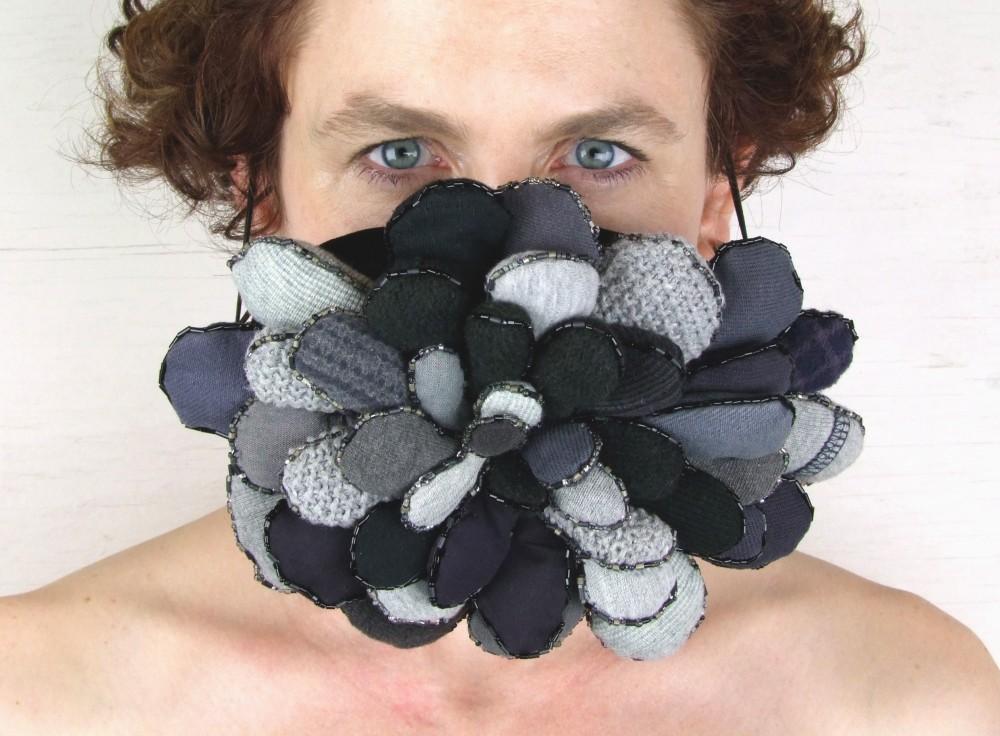Accepting death

An Object of Mourning created by GVSU art professor Renee Zettle-Sterling, made in 2012. Zettle-Sterling used copper, silver, clothing from her deceased brother Tommy Zettle, beads and elastic.
Feb 6, 2014
With her father dying when she was only 4-years-old, followed by her brother’s death a little later in life, Renee Zettle-Sterling, art professor at Grand Valley State University, had to learn to deal with grief and mourning at a young age.
To cope, art became a sort of outlet for her to channel her emotions and feelings toward the idea.
“I knew that I wanted to be an artist when I was really little…It was either that or an archeologist,” Zettle-Sterling said. “I would spend hours and hours just making things.”
The two professions were similar in the ways they focused on objects, she said, which spurred her fascination with the philosophy of objects and how objects extend individuals.
Spoons attracted her because of the different sizes and styles they came in, and after volunteering for Hospice care, bibs also caught her eye.
“We start wearing bibs and then we end wearing bibs…It’s reflective of the life cycle and I think we can all relate to them,” she said. “I think they speak universally, just like spoons.”
The different objects she chose to use in her work are a reflection of her life, she said. Certain objects, like death, create a commonality that unifies people.
“Objects can become metaphors for talking about life, and humanity, and who we are,” Zettle-Sterling said.
Specific objects that related to the loss she experienced have also been big in her work. In 2010, she created a project that centered entirely on the concept of grief.
Going off of the idea of the broach of mourning that was originated in the Victorian Era, Zettle-Sterling decided to make a different broach to wear everyday for a year.
The materials she used included fabric, hair and miscellaneous things from, or related to, her deceased loved ones.
After sharing her project with the director of Urban Institute of Contemporary Art, she was invited to participate in ArtPrize. From there, her broaches were put on a ribbon for display.
“What I love about ArtPrize is that it empowers the whole community,” Zettle-Sterling said. “I had no idea that it impacted the general public…and I thought that was really inspiring.”
Although she’s not planning on participating in the art competition anytime in the near future, there is a possibility she will submit more of her work at some point, she said.
In the meantime, she has decided to focus on her students, volunteer work and role as President-Elect of the Society of North American Goldsmiths.
Through teaching, she gained inspiration that has motivated and energized her, she said. But, with how demanding the school year can be, she had to remind herself that art is playful and to have fun with her work.
“You can make mistakes, you can play around, you can do things you wouldn’t normally do,” Zettle-Sterling said. “If you’re not playful, the essence of the work doesn’t come through. Part of the creative process is being playful.”
For more information, or to view her work, visit www.zettlesterling.com.























